A record crowd of more than 200 attended the fifth annual Scientific Symposium hosted Sept. 5 by USF and the Friedreich’s Ataxia Research Alliance (FARA).
There was standing room only as clinicians, researchers, patients and their families and friends gathered at the USF Health Center for Advanced Medical Learning and Simulation to learn about the latest advances in ataxia research. The live audience was bolstered by those from across the world who viewed the symposium livestream through the FARA Facebook page — more than 450 views were recorded.
Many symposium attendees were among the more than 800 friends of the USF Ataxia Research Center and FARA who attended the annual FARA Energy Ball Saturday, Sept. 7, raising more than $1.7 million in donations and in-kind gifts for both organizations.
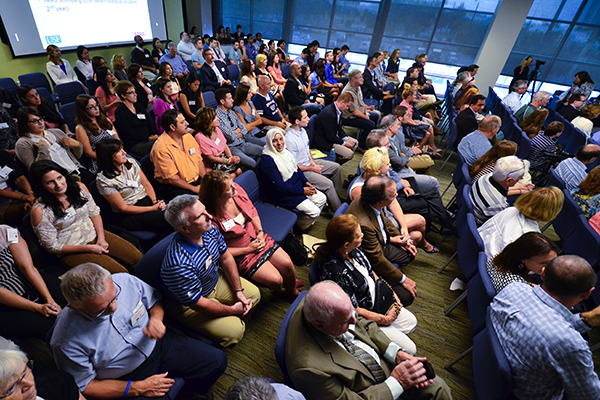
The collective efforts are producing results. This past year, FARA helped hundreds of patients become part of four new treatment trials, including the Edison Pharmaceutical-sponsored national EPI-743 trial led by USF neurologist Dr. Theresa Zesiewicz, director of the USF Ataxia Research Center. Findings from stem cell and gene therapy studies are giving researchers a better understanding of Friedreich’s ataxia in the drive toward a first treatment, and ultimately a cure, for the progressive, life-limiting neuromuscular disease.
Here are some highlights from this year’s symposium speakers:
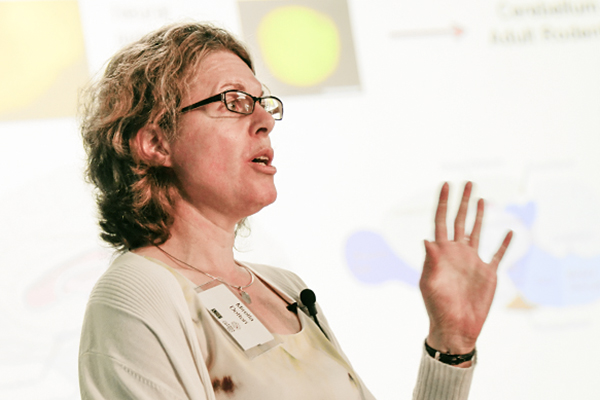
Mirella Dottori, PhD, principal investigator and senior research fellow at the Centre for Neuroscience Research, University of Melbourne, Australia. Using skin cells from Friedreich’s ataxia patients converted into pluripotent stem cells, Dr. Dottori’s team recently induced these stem cells to generate the specific cell types that degenerate in Friedreich’s ataxia, including heart and nerve cells.
“In the stem cell field, we have to work on all aspects. It’s critical that we still improve methods of generating patient-derived stem cells. It’s critical that we work on how we move from a stem cell the end-cell lineage that we need. It’s critical to work on how to use these stem cells for drug discovery. It’s critical to understand how to correct a mutation, ultimately for the transplantation of stem cells. A lot of research groups…are all working together on these different aspects to bring everything together. What we’re aiming for, always, is a cure — if not at least a treatment — and I think it’s feasible with all these approaches.”
Theresa Zesiewicz, MD, professor of neurology and director of the USF Ataxia Research Center, who reported on five clinical trials the center is conducting for patients with FA.
“This is a symposium where we come together as community, and it’s important that we all come together as one. Because, as (FARA’s) Ron Bartek said, alone we can do nothing, but together we can do everything.”

Guy Miller, MD, PhD, CEO of Edison Pharmaceuticals, Inc. Dr. Miller spoke about Edison’s quest for the first successful neuroprotective drug, including lessons learned in the development of the powerful antioxidant EPI-743 for Friedreich’s ataxia, now in a national Phase 2B clinical trial.
“The truth is we have lots of failure in drug development for neurogenerative disease. This process is no easier than a landing on the moon challenge…The first step is critical, and we believe that Friedreich’s ataxia is going to be the disease that sets forth in motion the key learning.”
“The ability to sequence your genes and understand what errors in DNA might lead to disease, the proteins that come from that, and ultimately the metabolites that regulate those proteins. We’re (Edison) interested in how that whole choir sings together, and we call that redox control.”
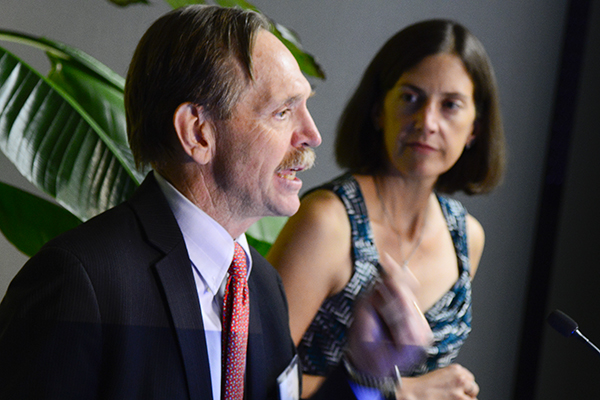
Jennifer Farmer, FARA executive director
“We hope those of you present here feel the momentum and progress toward changing the future of FA that Ron (Bartek) and I see.”
Ron Bartek, FARA president
“We need to continue to work together, with your participation and generous support… to push these clinical trials across the finish line – to get that first approved treatment that is so important.”
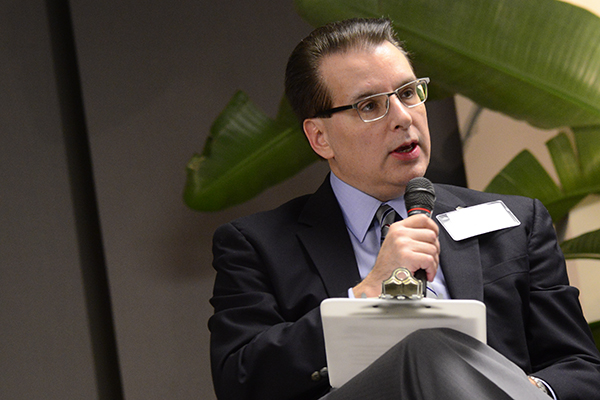
Clifton Gooch, MD, professor and chair of the USF Department of Neurology
“What we’ve seen in the five-year trajectory of this symposium is a locomotive gaining steam… We’ve entered the era of a therapeutic revolution in Friedreich’s ataxia… We’re at a great threshold… What we do (today) to improve the lives of patients with FA and make strides toward eradicating this disease will be remembered in the future. We need you, the patients and families, to continue to fight the good fight with us, but some day, I’m convinced, we will win this battle.”

Lealan LaRoche, diagnosed with Friedreich’s ataxia at age 20. LaRoche spoke as part of a patient panel discussion moderated by Dr. Gooch. She holds master’s degrees in architecture and city planning.
“Being diagnosed with this debilitating disease made me realize that designing for people who are disabled and abled together could be a great thing.”
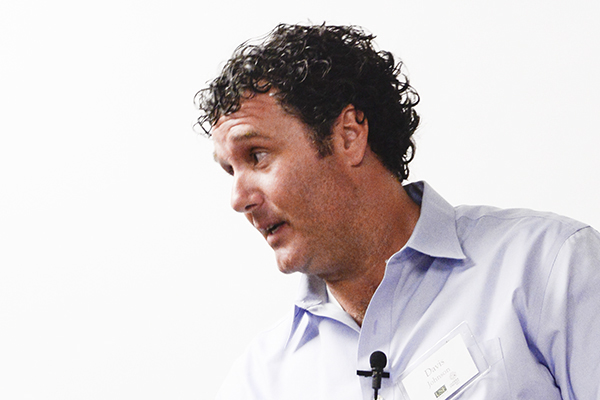
Davis Johnson, diagnosed with FA at age 40. Johnson, a patient on the panel, participated in multiple sports and played football in college. He has a 10-year-old son.
“My diagnosis has made me more patient. I used to live life to the fullest, go places, travel. Now I have to think about getting dressed, eating…everything I do requires some help…. But, being part of the studies and this symposium, and seeing all the people trying to find a cure, gives me hope.”

Participating in the patient discussion of living with Friedreich’s ataxia were, left to right, Natchez Hanson, Davis Johnson, Lealan LaRoche and Kyle Bryant.
Within the past five years, the multidisciplinary USF Ataxia Research Research Center has become one of the busiest clinical trial centers worldwide for new and experimental approaches to Friedreich’s and other ataxias.
The clinical trial testing the potential Friedreich’s ataxia drug EPI-746 has enrolled its full complement of 60 patients at three sites – UCLA and Children’s Hospital of Philadelphia as well as USF. Results of the trial are expected to be presented at next year’s symposium.

Staff and volunteers from the Friedreich’s Ataxia Research Alliance respond to queries from the online audience watching the symposium via livestream.

Symposium participant Regina Russo shows some muscle in her support of the fight against Friedreich’s ataxia.


Photos by Eric Younghans, USF Health Communications
